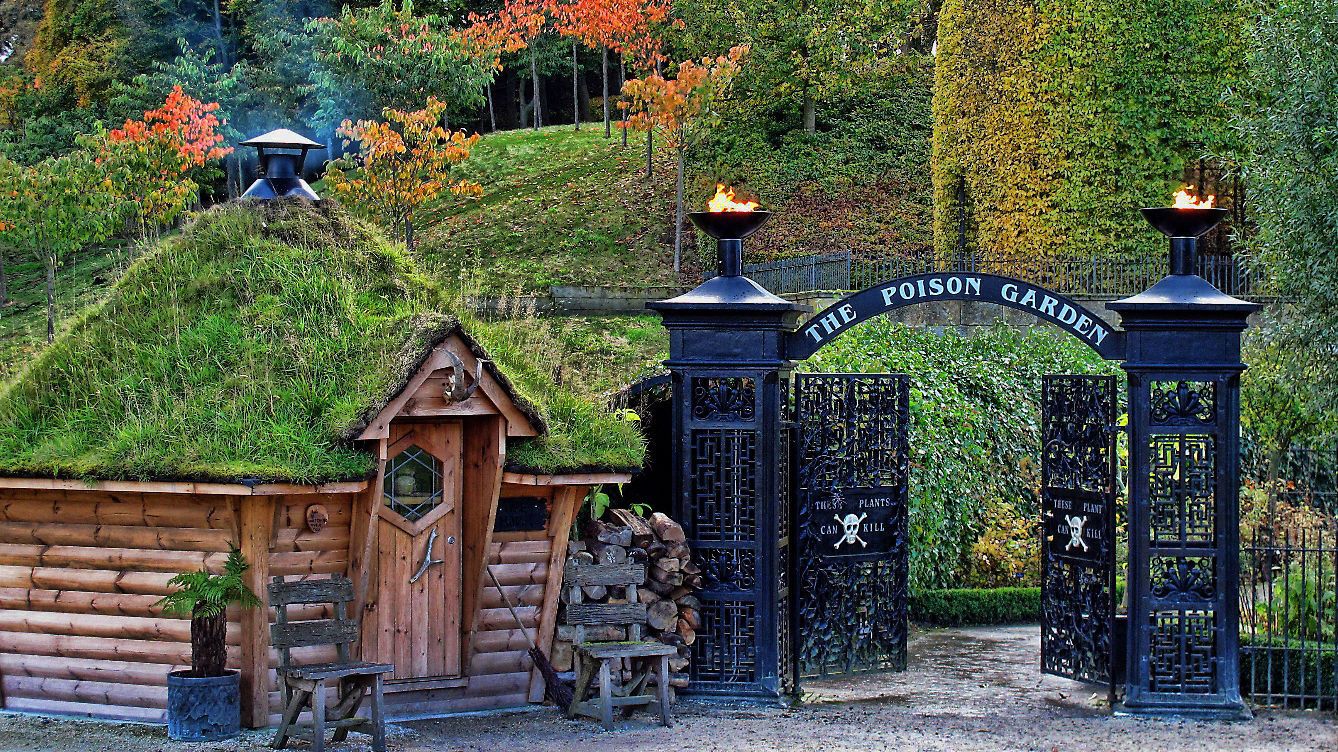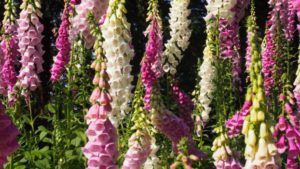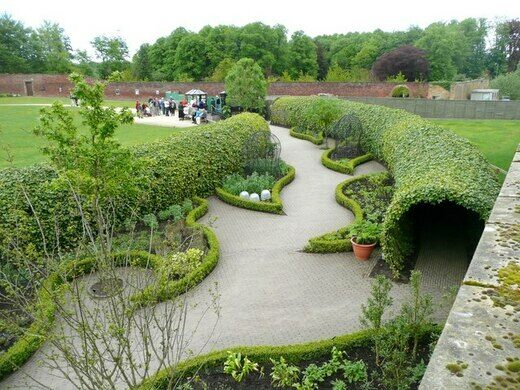
The Poison Garden is a part of the land that surrounds Alnwick Castle
“Do you dare to enter?” asks the official website of Alnwick Garden and quite aptly so. Well known for being one of the most dangerous tourist attractions in England, the Alnwick Garden, about 140 km from Edinburgh, is host to a small, beautiful but poison-filled garden, exclusively with over 100 toxic, intoxicating and narcotic plants. The access to the Poison Garden is strictly controlled with locked iron gates that open only for guided tours.
“Visitors are strictly prohibited from smelling, touching, or tasting any plants, although some people still occasionally faint from inhaling toxic fumes while walking in the garden,” remembers Kaveri Mehta, a Delhi-based school-teacher who visited the deadly garden two years ago.
Entry with caution
The Poison Garden slumbers behind black iron gates. It is a part of the land that surrounds Alnwick Castle, which fans of Harry Potter may recognise from the scene where the students learn how to fly on their brooms. Though the castle has been around for over 1000 years, the Poison Garden was conceptualised fairly recently, in 2005, by Duchess of Northumberland Jane Percy, who wanted to create ‘something unique’ that would be a true attraction for visitors.
At the entrance, all visitors are duly cautioned with large notices with the universal sign of danger, a crossed skull, that plants inside can kill. For their safety, guests are not allowed to walk through the garden on their own. There are tours available that explain the different types of plants and their properties.
Tour guides give warnings and talk about strict rules before tourists enter the garden. If one is seen touching anything, even the iron bars of caged plants, they are instantly removed.
Experience the dangerously attractive

Devil’s Trumpet plants are one of the most beautiful and dangerous in the Poison Garden
What visitors probably notice first is that the garden seems very colourful, attractive and a lot of plants look similar to normal flowers in anyone’s backyard. “But, don’t be fooled, these are pretty but deadly,” warns Mehta.
Many of the plants that grow in the Poison Garden have to be approved, with special permission from the government, to be grown. Plants like opium poppies, magic mushrooms and cannabis, to name a few.
One can even spot a few rare plants that require to be put inside the iron cages. Monkshood, also known as Aconitum or Wolfsbane, has the ability to kill humans instantly. Similar is the Daturas, or famously called the Devil’s Trumpet, that can send one to sleep forever.
There are even Daffodils inside! Those pretty daffodils in spring can cause poisoning too. If ingested, it could cause vomiting from stomach irritation. The garden also has trees, shrubs and vegetables that can be toxic. Some tree bark like Manchineel, if it comes in contact with eyes somehow, can cause permanent blindness. Giant hogweed is another dangerous plant, known for its photo-toxicity. It can cause second-degree burns which could take years to heal.
However, the fact that the Poison Garden is filled with literal poisons does not stop the tourists. Around 800,000 people visit the garden annually, according to its website.
A deadly stroll with creepy stories

A pathway inside the Poison Garden
Apparently, there have been attempts by visitors to touch some of the parts of the poisonous plant, despite all warnings.
The tour guides, in order to warn people as well as make the tour more amusing, narrate stories of people who have misused the plants, which ranges from ordinary tourists to wanted criminals! One such attempt was narrated to Mehta during her visit. She narrates her story and talks about Atropa Belladonna, an extremely poisonous plant that grows in the garden.
“The guide told us about a lady tourist who visited with her husband and tried to steal a leaf from one of the plants and failed thrice. On her fourth attempt, she hid it in her coat and fainted a few moments after that. Later, it was found out that she wanted to use the leaf to murder her husband,” says Mehta.
There have been countless murder cases over time involving poisons extracted through deadly plants similar to those in the garden. While the narration of the creepiest stories goes on, the tour guides also point out to the specific variety of plant that was used.
One of the scariest stories is that of Harold Shipman, a trusted doctor, who poisoned his patients with lethal doses of opioids and killed more than 250 of them. When convicted, he only said that that he was doing an experiment in order to find an antidote to that type of poison!
“Though they are extremely scary stories, these definitely make for a more adventurous and amusing evening while one is walking through one of the deadliest paths in the world,” adds Mehta.





















